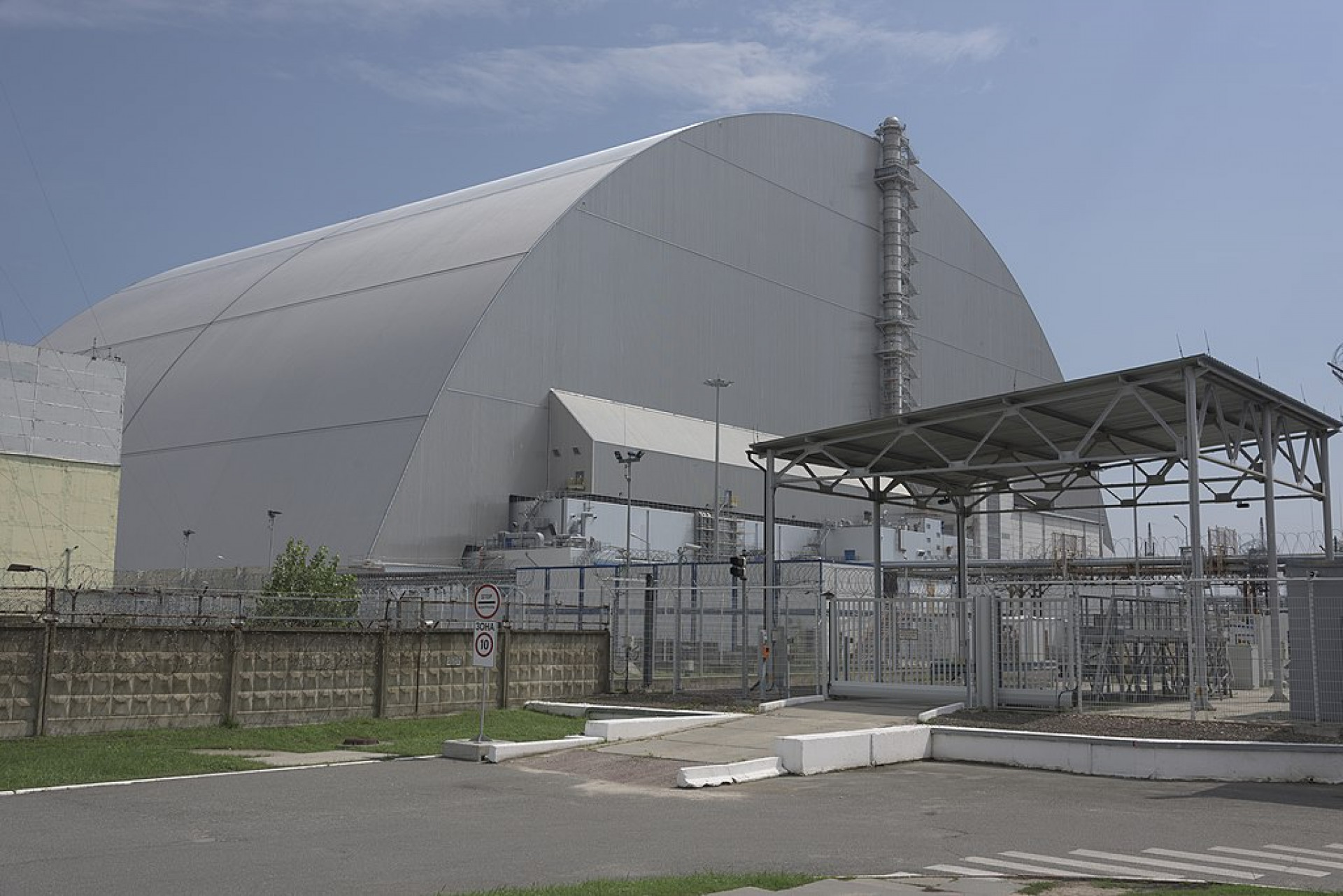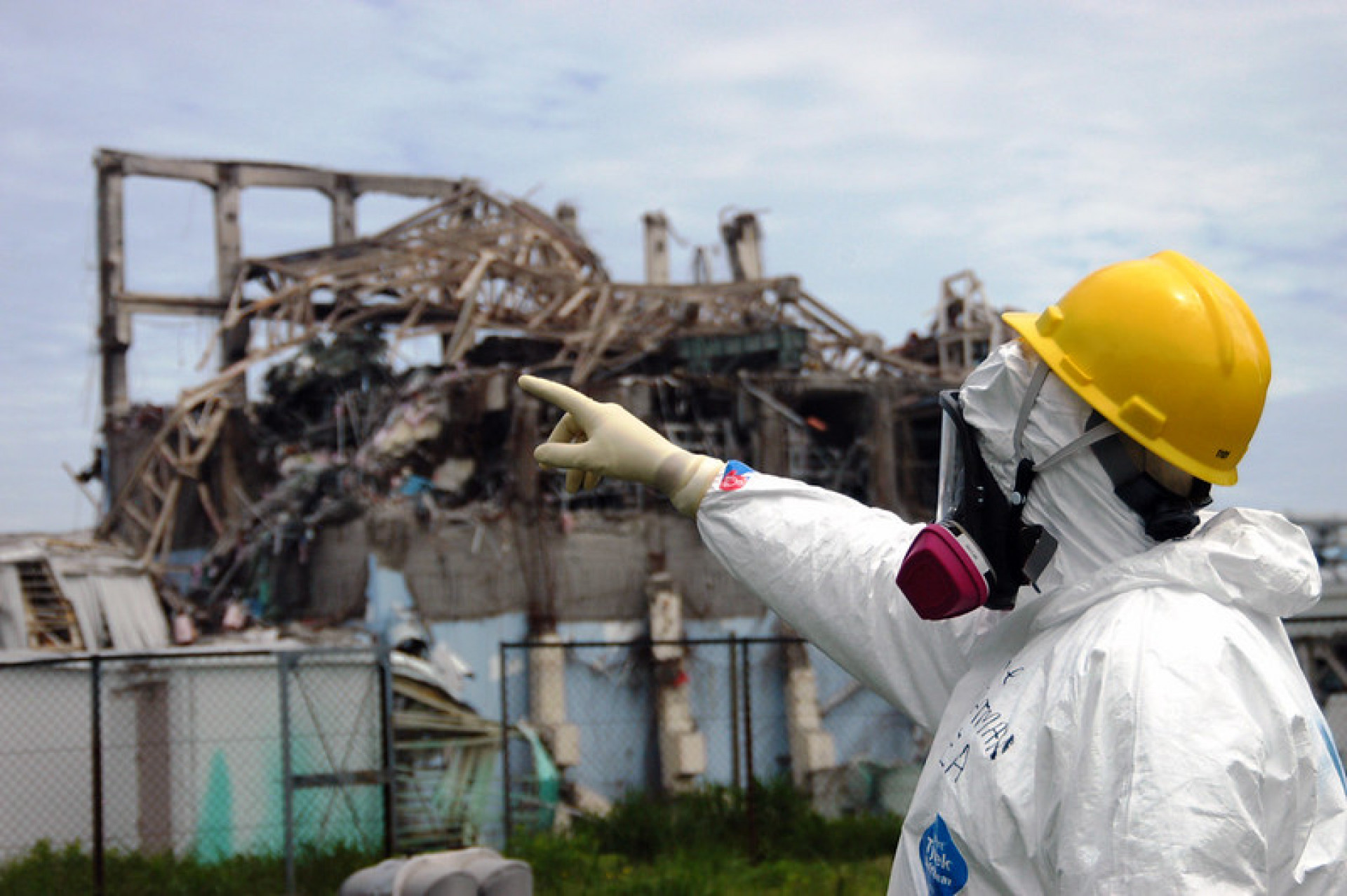
According to the International Energy Agency (IEA), nuclear energy accounts for about 10 percent of global electricity generation. It is also the second-largest source of low-carbon energy.
Nuclear power is usually obtained through nuclear fission, the splitting of atomic nuclei. Nuclear fission can occur as either a chain reaction or a non-chain reaction. Still, nuclear power reactors typically operate with chain reactions, where each fission event produces neutrons that can go on to induce further fission reactions, leading to a self-sustaining reaction.

Uranium-235 is commonly used for this process because it readily divides into smaller nuclei when colliding with neutrons. As a result, it releases a vast amount of energy, generating heat and steam, which are then used to drive turbines that produce electricity.
Uranium-235, however, is a radioactive material. This means that it emits ionizing radiation, capable of damaging living tissues and causing long-term environmental impact. This is a major concern with the use of nuclear energy, as we’ve seen in a number of nuclear disasters.
Human errors, natural disasters, and equipment malfunction have all contributed to the worst nuclear accidents.
Here are some of them.
1. The Chernobyl disaster

Date: April 26, 1986
Cause: Human error and reactor design flaw
Effects: According to the official, internationally recognized death toll, 31 people died as an immediate result of the accident, while the UN estimated that 50 deaths could be directly attributed to the disaster. In 2005, it predicted a further 4,000 might eventually die as a result of the radiation exposure.
While consensus remains elusive and the statistics are subject to intense debate, some argue that the eventual death toll from cancers stemming from radiation exposure at Chernobyl could reach tens or even hundreds of thousands.
Radionuclides from the accident have been found in plants, soil, water, animals, and animal-derived products (such as milk and wool).
International Atomic Energy Agency (INES) Classification: Level 7 (maximum severity).
On the night of April 26, 1986, an RBMK-1000 reactor overheated and blew up at the Chernobyl Nuclear Power Plant, near the city of Pripyat, Ukraine.
Operators had attempted to simulate a power outage to test the response of the reactor's safety systems. Specifically, they wanted to assess the ability of the reactor's turbines to provide enough power to cool the reactor's core in case of a shutdown.
However, to do this, they violated safety protocols by disabling automatic shutdown mechanisms and reducing power to dangerously low levels.
Moreover, the No. 4 reactor at Chernobyl had a design flaw, specifically a positive void coefficient. As water (the reactor’s coolant) turned to steam, it became less effective at slowing down neutrons, and the reactor's reactivity increased.
As the No.4 reactor became more reactive, it produced more steam and more power until it suffered a heat and power spike, which eventually caused a steam explosion, destroying the reactor core and releasing a significant amount of radioactive materials into the air.
In a second explosion, the reactor’s graphite moderator caught fire, causing plant workers and firefighters to receive high doses of radiation. At least 30 of them died within weeks after the explosion.
Residents of Pripyat were evacuated 36 hours after the explosion; many of them had already started showing symptoms of radiation poisoning.
As the radioactive contamination spread, the evacuation area was expanded and the Chernobyl Exclusion Zone was established. Today, this restricted area covers around 1,000 square miles (2,600 square kilometers).
According to the (World Health Organization (WHO), 600,000 people within the Soviet Union were exposed to radiation due to this accident. Reports have linked it to an increased incidence of cancers among those living in affected areas.
2. The Fukushima disaster

Date: March 11, 2011
Cause: Natural disaster
Effects: Approximately 2,313 deaths were related to the disaster, more than 100,000 people were evacuated, and there was contamination of land and sea.
INES Classification: Level 7 (maximum severity).
On March 11, 2011, a magnitude 9.0 earthquake struck off the northeastern coast of Japan. In the Fukushima Daiichi Nuclear Power Plant, operated by the Tokyo Electric Power Company (TEPCO), reactors detected the earthquake and shut down automatically.
However, the earthquake generated a massive tsunami with waves reaching up to 130 feet (40 meters) in height, and the power plant was in its path. The tsunami overcame its seawall and knocked out the Emergency Diesel Generators (EDG), providing backup power to keep coolant pumping around the reactor cores, which remained hot despite the shutdown.
Without proper cooling, the reactor cores began to overheat, resulting in partial meltdowns of the fuel rods. Chemical explosions followed, and radioactive substances leaked into the air and the seawater. Over 300,000 people were evacuated as the exclusion zone around the power plant reached 18 miles (30 kilometers).
Extensive cleanup and decontamination efforts allowed most areas in the exclusion zone to be reopened from 2014 onwards. In 2022, the town of Futaba (Three miles, or five kilometers, away from the power plant) was the last to be reopened. However, only 18% of the pre-accident population was willing to return to municipalities in the evacuated zone.
The reactors were cooled down with water, and the contaminated water was stored in tanks until it was released into the ocean despite international opposition.
3. The Kyshtym disaster
Date: September 29, 1957
Cause: Equipment failure and human error.
Effects: Radiation exposure of approximately 270,000 people. Radiation contamination of animals, plants, food, water, and land. Likely deaths of hundreds of people.
INES Classification: Level 6 (serious accident).
The Kyshtym disaster took place on September 29, 1957, at the Mayak Production Association, a nuclear complex more widely known by the code name Chelyabinsk-40, near the town of Chelyabinsk on the eastern slopes of the central Ural Mountains in the Soviet Union. The complex reprocessed nuclear fuel and fabricated plutonium for use in nuclear weapons. For this reason, it contained a large amount of radioactive waste.
Liquid waste was kept in underground tanks, one of which had a malfunctioning cooling system. For more than a year, the tank’s contents grew steadily hotter from radioactive decay until the tank exploded with a force equivalent to around 70 tons of TNT.
The explosion sent a plume of radioactive fallout high into the air. The plume drifted hundreds of miles, through a region with hundreds of thousands of inhabitants. The main area of contamination had a radius of around 62 miles (100 kilometers). This area is now called as the Eastern Ural Radioactive Trace (EURT).
At the time of the Kyshtym Disaster, the Soviet government had a policy of secrecy regarding nuclear activities. In fact, it took around a week to decide on the evacuation of 10,000 locals, many of whom were already suffering from radiation poisoning. Houses, animals, plants, and the land had been all contaminated with radiation, food, and animal fodder. Pine trees died, affecting wildlife.
We now know that around 9,000 square miles (23,000 square km) of land was contaminated and that at least 270,000 people were exposed to the radioactive fallout from the incident.
4. The Windscale fire
Date: October 10, 1957
Cause: Reactor design flaw.
Effects: Widespread radiation contamination, milk ban, possible long-term health effects.
INES Classification: Level 5 (accident with wider consequences).
The Windscale fire was a nuclear incident on October 10, 1957, at the Windscale nuclear facility (now Sellafield) in Cumberland, England. The plant consisted of two graphite-moderated reactors used to produce plutonium for the United Kingdom's nuclear weapons program.
The accident happened during the routine heating of the reactor core, intended to regulate the levels of Wigner energy, which accumulated due to the displacement of carbon atoms in the graphite’s crystalline structure after repeated neutron bombardment. This energy needed to be regularly annealed through a heating process that released the energy.
However, the reactor overheated to 750°F (400°C) this time, even after the annealing process. Three days after the first detection of the heating anomaly, with efforts to cool the pile had failed, an overheating fuel cartridge caught fire. Cooling fans, which had been sped up to help cool the reactor down, fed the flames.
Efforts were made to extinguish the fire, including pumping carbon dioxide and water into the pile, eventually cooling the reactor to a stable temperature.
However, the fire had caused radionuclides to spread across the UK, Wales, and parts of northern Europe. Due to the possibility of cows eating contaminated grass, the British government implemented a milk ban on cows raised in a 200-square-mile (520 square kilometers) around the reactor.
While the accident was initially downplayed, as time went by, cases of cancer and genetic disorders in the affected area were linked to the fire.
This is the worst nuclear accident in the UK’s history.
5. Three Mile Island
Date: March 28, 1979
Cause: Human error leading to loss of coolant accident and partial nuclear meltdown.
Effects: Mass evacuation.
INES Classification: Level 5 (accident with wider consequences).
The Three Mile Island accident occurred on March 28, 1979, at the Three Mile Island Nuclear Generating Station near Harrisburg, Pennsylvania.
The accident started as a relatively minor malfunction in the secondary cooling circuit, which caused the temperature in the primary coolant to rise.
Although the reactor underwent an automatic shutdown, the instrumentation failed to register the failure of a relief valve to close. This resulted in a significant loss of primary coolant, allowing residual decay heat to accumulate in the reactor core, leading to severe damage.
Operators did not notice this, and the reactor kept losing coolant until the top of the reactor core was exposed and the intense heat caused a partial nuclear meltdown. Radioactive isotopes leaked into the coolant water. When this was detected, the whole containment building was contaminated with radioactive gas.
The Three Mile Island's supervisor declared an emergency. Pregnant women and pre-school-age children within a five-mile radius of the plant were evacuated two days after the accident as radiation levels rose in the area. By Friday, March 30th, the evacuation zone was expanded to a 20-mile radius.
Independent health studies showed no evidence of an abnormal number of cancers in the area in the years after the accident. However, clean-up took nearly 12 years and cost approximately $973 million, making the Three Mile Island accident the most severe accident in the history of the American commercial nuclear power generating industry.










 81
81


